

This last few days have been devastating for so many families as loved ones fight this evil Pandemic.
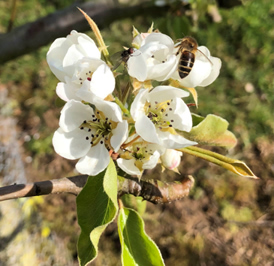 We can only follow scientific advice and hope this will eventually get us over the current 'very scary' situation.
We can only follow scientific advice and hope this will eventually get us over the current 'very scary' situation.
A small comfort has been the beautiful sunshine of late, however that is a blessing for those of us with a garden but of not much solace to those trapped in a flat.
The Sunshine has brought the bees out, here pollinating pear blossom.
The new season advances at pace with blossom emerging in all directions.
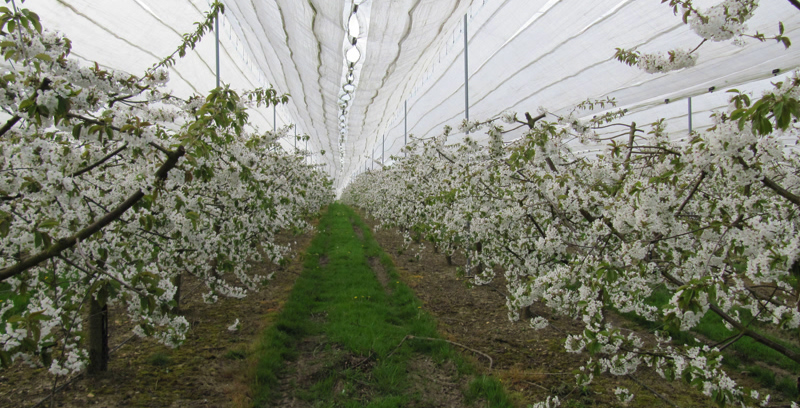
From one of my Agronomist friends, who covers East Anglia and North Kent, a few pictures which arrived a bit late for last week's Journal
"Will not see any scab yet. Too early, but a little Primary mildew starting to become evident as blossom trusses open.
Pest levels are low but a few Rosy Apple Aphid, Winter moth and Tortrix caterpillars emerging. Pear sucker levels generally low and natural overwintering anthocorids (predators) being seen.
Leaf colour looks poor but will not change no matter how much foliar nutrition is applied until it warms up day and night.
Below: Red Windsor with frost on the early pink bud stage
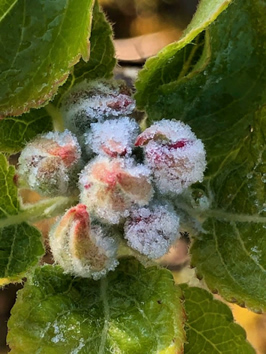 Frost damage at various levels from some to nothing. I always remember the saying " frost is never as bad as you think but hail is always worse"
Frost damage at various levels from some to nothing. I always remember the saying " frost is never as bad as you think but hail is always worse"
The comment on leaf colour is demonstrated by pictures taken by The English Apple Man in his garden on Friday 19th March and today Friday 10th April.
As I mentioned in last week's Journal, Agronomists are walking orchards (and other crops) on a regular (2 week) interval looking for early signs of Pest & Disease. Spotting the emergence of P&D allows accurate timing of protectants: and protectants do not necessarily mean chemical sprays.
Biological control is becoming increasingly the weapon used to control pests and the timing of the application/introduction is critical for efficacy therefore the Agronomist is integral to the decision making.
There are three basic strategies for biological pest control: classical (importation), where a natural enemy of a pest is introduced in the hope of achieving control; inductive (augmentation), in which a large population of natural enemies are administered for quick pest control; and inoculative (conservation), in which measures are taken to maintain natural enemies through regular reestablishment.<2>
Predatory mites
Predatory bugs are generalist predators and will feed on and thus help to control many pests including aphids, suckers, spider mites, codling and tortrix moth eggs and young caterpillars. Predatory flower bugs (anthocorids) are often the most common predatory bug species in apple and pear orchards.
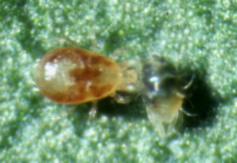 The orchard predatory mite Typhlodromus pyri - Many species of predatory mites are found on unsprayed apple trees but, in selectively sprayed orchards, the most common and important species is the orchard predatory mite Typhlodromus pyri. - This species has developed strains resistant to organophosphorus and carbamate insecticides.
The orchard predatory mite Typhlodromus pyri - Many species of predatory mites are found on unsprayed apple trees but, in selectively sprayed orchards, the most common and important species is the orchard predatory mite Typhlodromus pyri. - This species has developed strains resistant to organophosphorus and carbamate insecticides.
It is the key natural enemy of the fruit tree red spider mite and apple rust mite and effectively regulates populations of these pest mites such that outbreaks rarely occur.
Winter Moth Caterpillar - Eggs hatch in spring mainly from bud-burst to green cluster, but some hatch later.
The tiny caterpillars are often blown from tree to tree and infestations may also spread to fruit trees from adjacent woodland in this way. Feeding continues until late May or early June. When mature, the larvae drop to the ground to pupate.
Rosy Apple Aphid - Rosy apple aphid, also known as 'blue bug', is one of the most important and damaging pests of apple. A similar species, the pear bedstraw aphid, attacks pear. The life cycle involves migration between the two hosts apple and plantain. All commercially-grown apple varieties are susceptible, but Bramley, Discovery, Egremont Russet, Golden Delicious and Jonagold are highly susceptible.
Below: left; Winter Moth Caterpillar and right; Rosy Apple Aphid
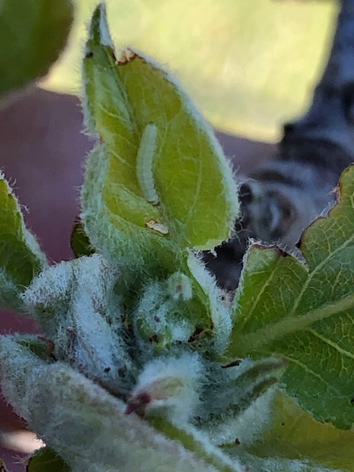
.3x4cm.jpg)
Below: left; Capped blossoms due to apple blossom weevil and right; Adult Forest Bug
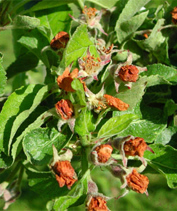
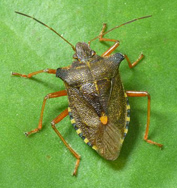 Apple blossom weevil was one of the most destructive apple pests before the advent of insecticides. In the past, it was uncommon in conventional commercial apple orchards as it was controlled very effectively with organochlorine insecticides. The last of these, HCH (Gammacol, Lindane), was withdrawn from brown-capped years ago and apple blossom weevil has since been increasing in importance.
Apple blossom weevil was one of the most destructive apple pests before the advent of insecticides. In the past, it was uncommon in conventional commercial apple orchards as it was controlled very effectively with organochlorine insecticides. The last of these, HCH (Gammacol, Lindane), was withdrawn from brown-capped years ago and apple blossom weevil has since been increasing in importance.
Brown-capped blossoms, formed after the larvae have nipped the petal bases to arrest their development, are the characteristic damage of this pest.
Forest Bug - Forest bugs are polyphagous. Their main food source is any of several species of oaks, but they can also be found on alder, hazel, and other deciduous trees, including apple and cherry.
Below: left; Apple Blossom Weevil and right; Forest Bug Nymph
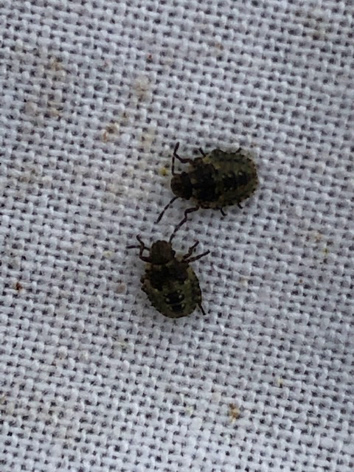
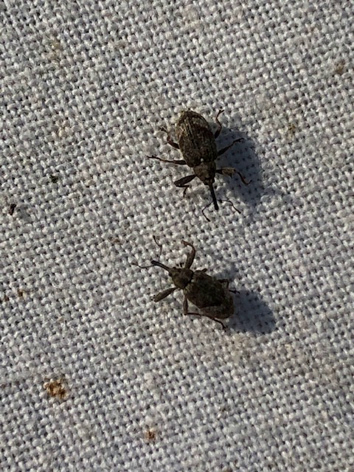
---------------------------------------------------------------------------------------------------------------------------------
My agronomist friend in the West Midlands reports
"All fine here (including the weather). Pictures below of Smitten apples in Herefordshire coming into blossom (sadly also caught a bit of frost) and Victoria plum blossom in the Vale of Evesham (fortunately untouched by frost).
Looks like full bloom on main apple varieties could be earlier than last year (and that was early enough). I saw Red Windsor on Monday with about 10% open flower near Hereford. Pears will be at full bloom by the weekend.
Most of the cider apples are at bud burst now and will have had their first scab spray in anticipation of rain over the Easter weekend.
Below: left; Smitten blossom in West Midlands and right; Victoria Plum Blossom in Herefordshire
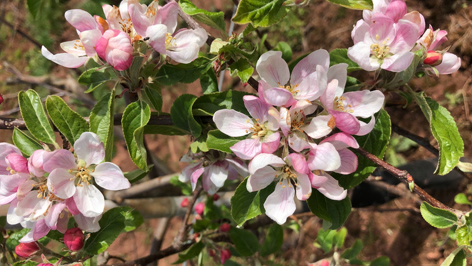
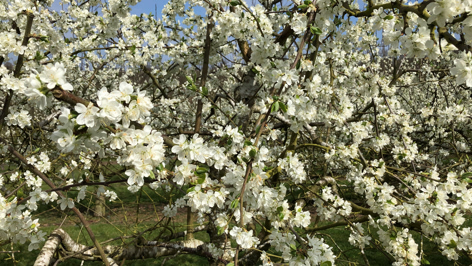
My Agronomist friend in Kent sent me pictures of Braeburn, Gala and Conference Pear
Below: left; Braeburn at Pink Bud and right; Gala which is still at the Green Cluster stage
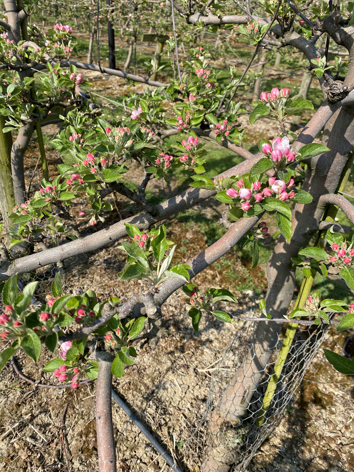
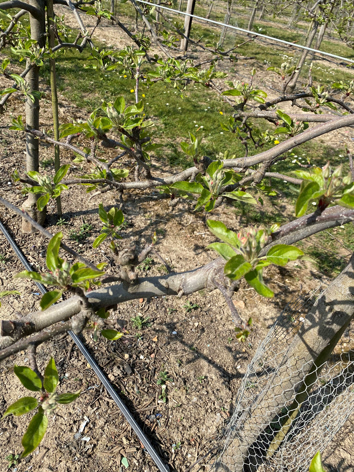
Below: Conference blossom in Kent
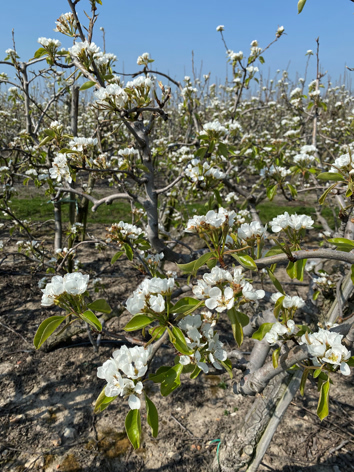
Sanitiser has taken on a high profile because of COVID-19 and a number of distilleries have changed tack form distilling spirits and turned to making Hand Sanitiser, One such distillery is owned by a friend. Will Edge who featured in an article in the English Apple Man Journal in 2016 is now producing 'Edge's Sanitiser 70 percent alcohol.
Click on GREENSAND RIDGE DISTILLERY article in Journal
Sanitiser
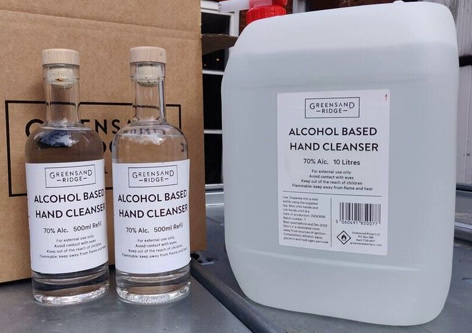 Greensand Ridge Distillery - Crowdfunding initiative
Greensand Ridge Distillery - Crowdfunding initiative
The distillery, which has been making sanitiser for two weeks, has already been supplying a number of care businesses including hospices, residential homes, nurses and the police.
They have been gifting 1 out of every 10 sanitiser containers to those organisations, but claim it is not enough to satisfy the demand they have.
Will Edge, the founder of the business, says "so much of the alcohol and sanitiser in the market is being hoovered up by private companies to sell to desperate consumers at a profit. We have chosen to supply through our regular retailers as a thank you for supporting us over the years, and we've been gifting as much as we can. But as a small business with our own struggles, we can only do so much".
The business aims to raise £12,000 to donate all of their current stock to the care sector, with any additional amount raised will be invested in raw materials to directly benefit care organisations.
Click on GREENSAND RIDGE CROWDFUNDING
Finally in these challenging times - Stay Safe
Take care
The English Apple Man